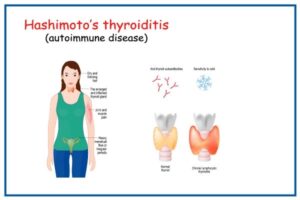What do food sensitivities, autoimmune diseases, depression, and anxiety all have in common? These conditions are all associated with impaired gastrointestinal health. Ranging from poor diet to excessive stress many factors can negatively affect your gut, potentially resulting in increased intestinal permeability, systemic inflammation, and the development of certain health conditions. However, there is something you can do to help your gut heal or to prevent further damage. Implementing a gut protocol that restores optimal digestive health. This protocol typically involves four steps: remove, replace, reintroduce, and repair.
To learn more about these steps, continue reading below.
What is intestinal permeability?
The intestinal tract is one of the body’s primary physical barriers from the outside world, protecting us from potentially harmful environmental factors passing through the digestive tract, such as toxins, pathogens, and other antigens. In a healthy gut, the intestinal permeability is tightly regulated and selectively allows the transport of substances, such as water, electrolytes, and nutrients from the gut across the gut barrier, while preventing the absorption of harmful substances.
However, the gut can be damaged by certain outside factors and result in increased intestinal permeability, also referred to as “leaky gut”. Contributing factors to intestinal permeability include poor dietary choices, nutrient deficiencies, stress, and infections.
Increased intestinal permeability may enable antigens to cross the gut mucosa into the systemic circulation, resulting in an immune response and systemic inflammation. Intestinal permeability has been associated with certain conditions, such as IBS, ulcerative colitis, Crohn’s disease, and autoimmune conditions like celiac disease, diabetes, and rheumatoid arthritis.
What are the four steps of gut healing?
1. Remove
The first step is to remove pathogens and other triggers, such as stress, dietary triggers, and chronic alcohol consumption, that are associated with intestinal permeability. Targeting pathogens may involve testing and treating with pharmaceutical medication, antibiotics, or antimicrobial herbal supplements. Removing dietary triggers, such as
• Alcohol
• Food additives
• Food sensitivities which are identified through an elimination diet
• Gluten
• Refined starches and sugar
• Trans fatty acids
• Refined oils
2. Replace
The next step is to replace inflammatory foods with nutrient-rich and gut-healing foods that help reduce inflammation and support digestive health and healing. These foods include:
• High-quality protein foods (poultry, fish, lamb, eggs)
• Extra virgin olive oil
• Omega-3 fatty acids
• Anti-inflammatory herbs and spices
• Adequate intake of vegetables and fruits
Certain dietary supplements may also support digestive function and assist in digestion and absorption of nutrients.
3. Reintroduce
The third step is to reintroduce the gut microbiota with beneficial bacteria. Probiotics have been shown to improve the composition of the gut microbiome, and they may improve gut health by enhancing the secretion of anti-inflammatory substances and reducing intestinal permeability.
Probiotics can also be found in fermented foods, such as sauerkraut, kombucha, kimchi, and fermented tea.
4. Repair
The last step is repairing the intestinal lining with nutrients and medicinal herbs that have been shown to decrease intestinal permeability, such as
• Aloe vera
• Mastic gum
• L-glutamine
• Marshmallow root
• Zinc
• Vitamin D
Conclusion
Many dietary and lifestyle factors can adversely affect digestive health and contribute to numerous health conditions. The goal of the gut protocol is to minimize these factors that lead to increased intestinal permeability and introduce factors that help heal and promote a healthy, functioning gut. If you think you could benefit from the gut protocol, speak with your integrative health care professional for guidance or click here to apply to work with us.



